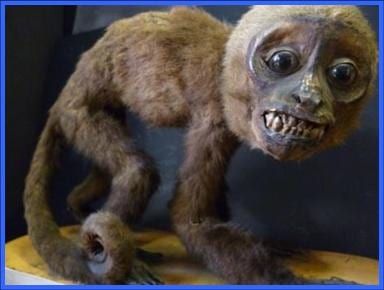Specimen of the Week: Week 140
By Mark Carnall, on 16 June 2014
 It’s the 140th specimen of the week! That’s nearly three years of weekly Grant Museum specimen goodness! In order to celebrate this sort of milestone, and following on from Stacy’s worm theme, this week’s specimen is (probably) the oldest specimen in the Grant Museum. With a little further ado, representing deep time and a group of animals that despite their name aren’t particularly sexy, bordering on underwhelming (that’s the other blog series- Ed.). This week’s specimen of the week is…
It’s the 140th specimen of the week! That’s nearly three years of weekly Grant Museum specimen goodness! In order to celebrate this sort of milestone, and following on from Stacy’s worm theme, this week’s specimen is (probably) the oldest specimen in the Grant Museum. With a little further ado, representing deep time and a group of animals that despite their name aren’t particularly sexy, bordering on underwhelming (that’s the other blog series- Ed.). This week’s specimen of the week is…
*Ottoia prolifica, the ancient penis worm*
1) This specimen is a fossil of Ottoia prolifica, a species of priapulid worms. Priapulid worms, commonly referred to as penis worms are a seperate phylum of creatures. We are in the phylum Chordata with all other animals with a backbone including fish, birds, amphibians, reptiles and other mammals so despite this wormy creature resembling other wormy creatures it is in fact a whole different kind of worm. Priapulida take their name from the Greek god of fertility for no particularly sophisticated reason beyond they sort of superficially resemble a penis if you squint a bit.
2) I hope that you’ve clocked that this specimen is a fossil. Priapulid worms are still alive today living in muddy shallow water environments. I mentioned above that this specimen is one of the oldest, if not the oldest, in the Grant Museum. It is a specimen collected from the Burgess Shale a fossil locality designated a UNESCO World Heritage Site part of the The Canadian Rocky Mountain Parks UNESCO World Heritage Site for the importance of the fossils in terms of their amazing preservation, their age and how important they are in understanding how animal life evolved. This specimen is over 500 million years old making it the oldest in the Grant Museum. Sadly geological and extra terrestrial specimens from the geology collections and the regional planetary image facility take the title of oldest specimens at UCL.
3) There are only 16 living species of priapulids today and almost as many extinct fossil species. Some priapulid worms are, perhaps surprisingly, active predators feeding on other invertebrates. Other species appear to feed exclusively on detritus. Ottoia prolifica fossils are often found preserved in a U-shape leading to the hypothesis that these animals burrowed into the mud and they are found preserved in their burrowed position. From fossil species like Ottoia prolifica, the priapulid way of life seems to be a very successful one, priapulid worms remaining generally unchanged from their first appearance through to today. A humbling thought given how much of a meal our subspecies has made of things in the last 200,000 years alone.

Life restoration of Ottoia in natural environment with nearby Haplophrentis. Image Smokeybjb / CC-BY-SA-3.0 via Wikimedia Commons
4) This specimen is preserved as a black carbon film on a dark shale (and is subsequently hard to photograph particularly well) however the annulations (the series of lines) of the body can be seen as well as what could be the gut, the dark line running down the midline, and what looks like stomach contents have been preserved here. Our specimen is missing the head section so we can’t see the spikes and hooks that they use to grasp prey.
5) Never heard of Ottoia before today? Well you may have sort of inadvertently seen one. In the excellent animal horror film Deep Rising, a film with a memorably disturbing toilet cubicle scene, the large tentacled creature is speculated by one of the main characters to be an Ottoia-like creature. Of course, the creature in the film is of gigantic size with many tentacles and also appears to have eyes and a beak but 500 million years of evolution may account for these.
Mark Carnall is the Curator of the Grant Museum of Zoology
2 Responses to “Specimen of the Week: Week 140”
- 1
-
2
Specimen of the Week: Week 144 | UCL UCL Museums & Collections Blog wrote on 13 November 2014:

[…] “Another worm? How many are there?” You may be thinking and yes, we’ve had penis worms and peanut worms in recent weeks. However, despite me just telling you this specimen is a worm it […]
 Close
Close



[…] representative of my Canadian homeland such as a fossil from the Burgess Shale, but the curator (see SOTW 140) beat me to it. Sadly, the Grant Museum has but one documented specimen from this phenomenally […]